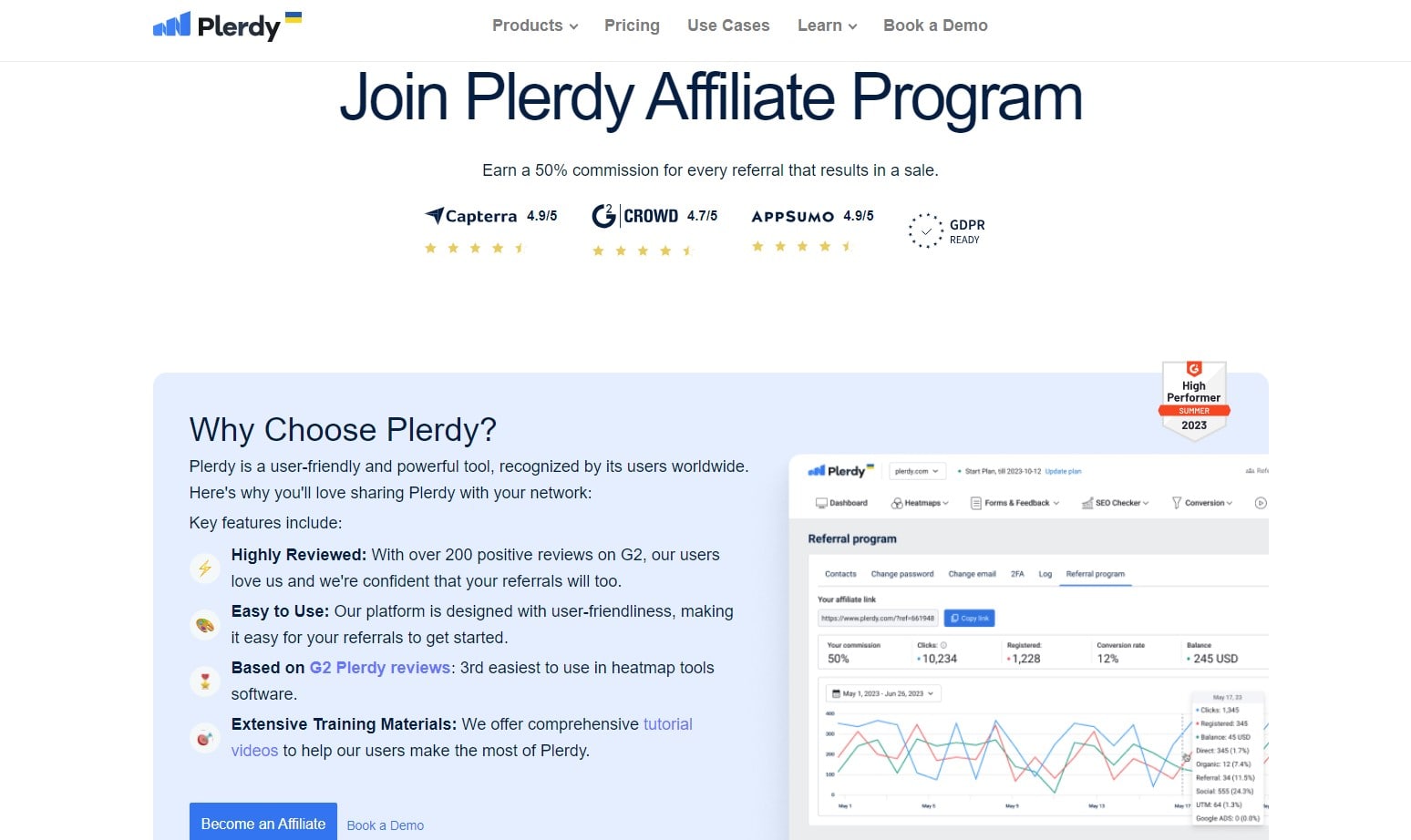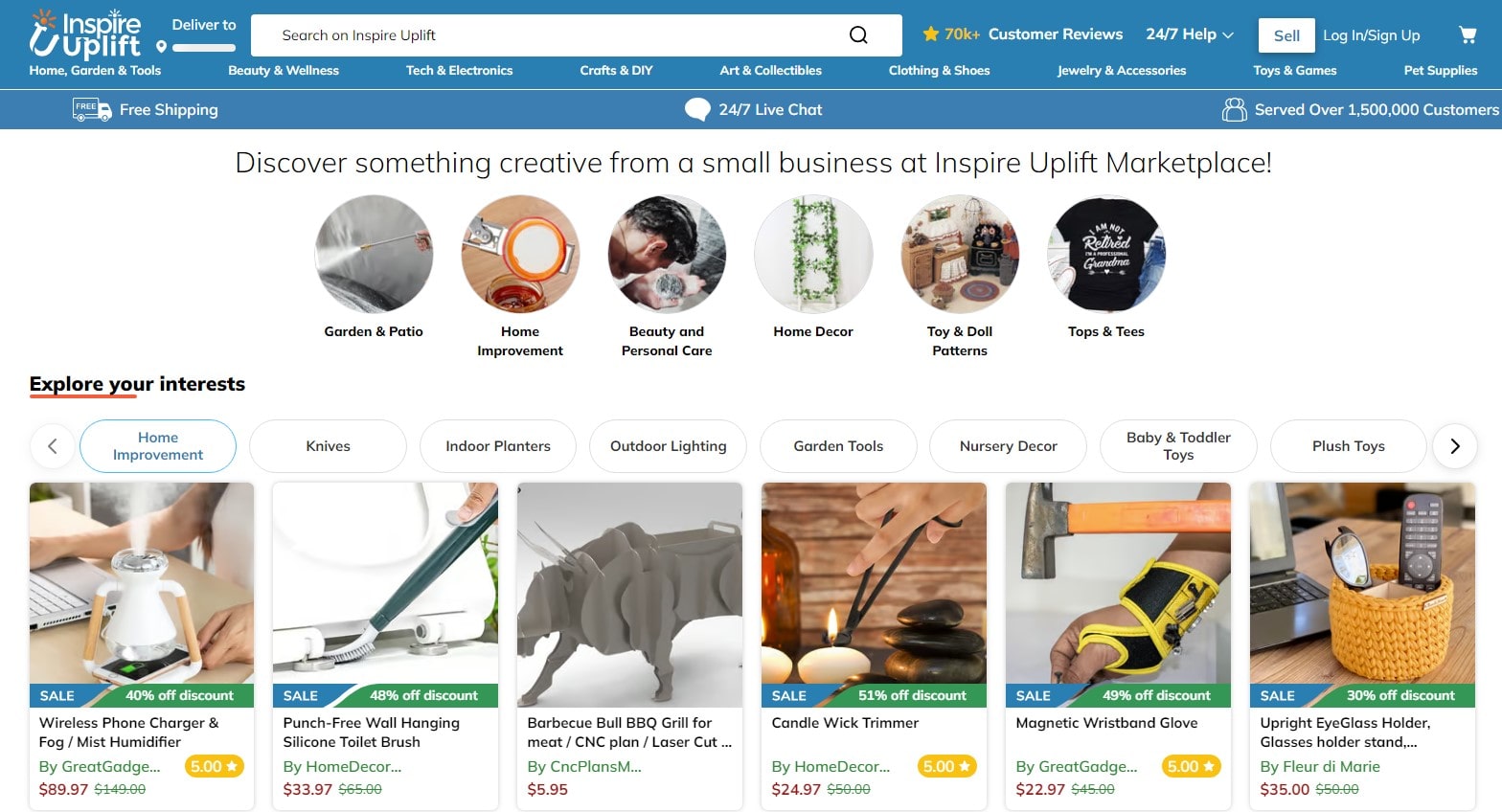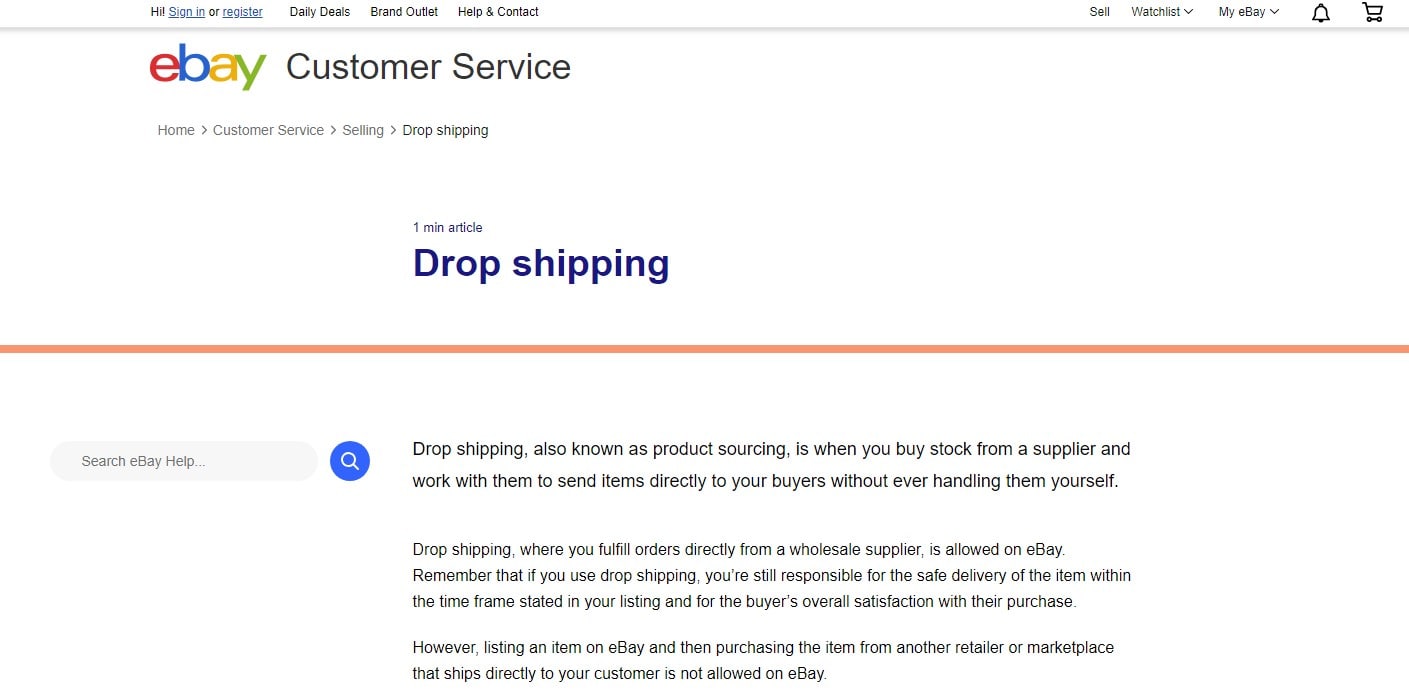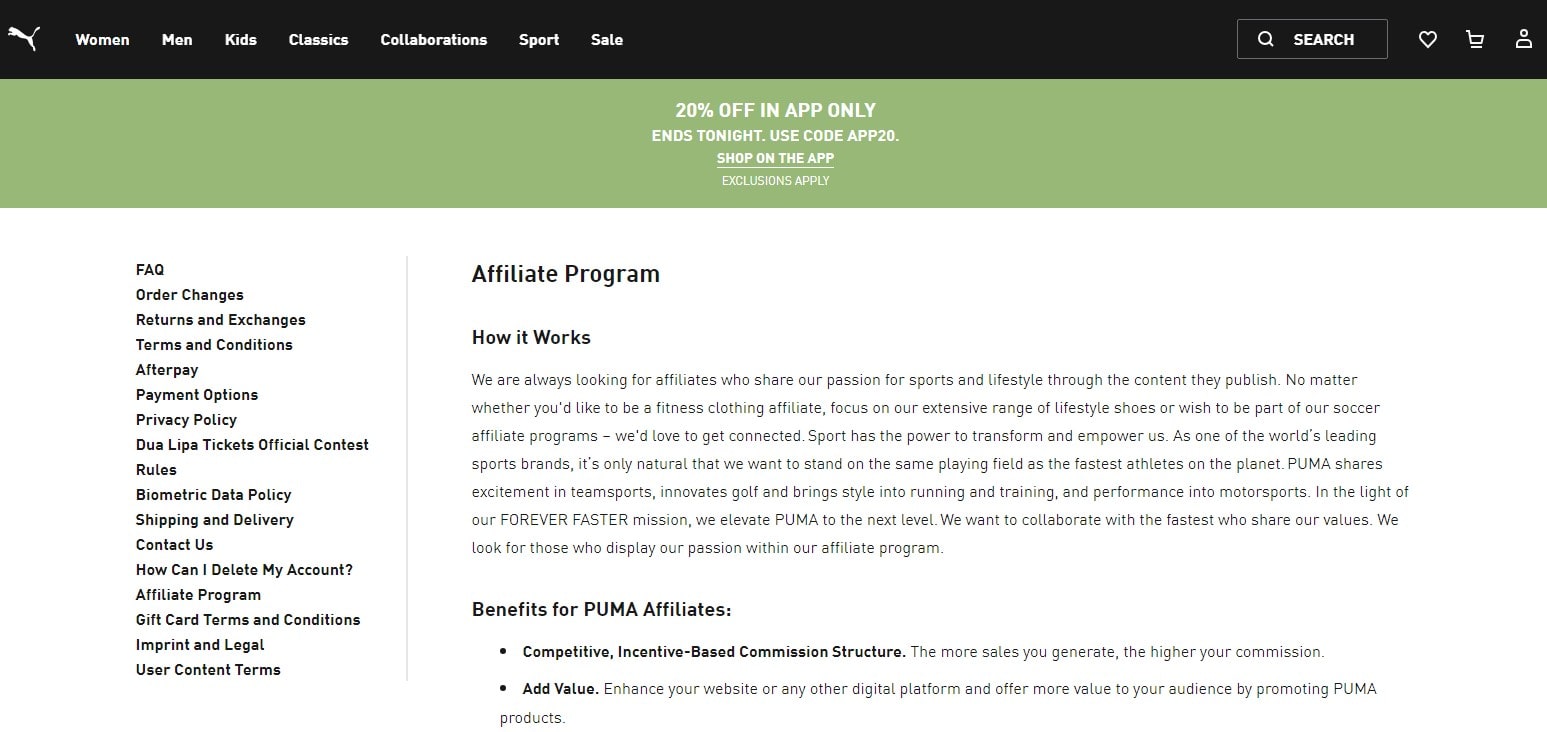In the digital commerce arena, two dominant strategies catch the spotlight—affiliate marketing and dropshipping. Navigating through the uncharted territory of online business, it’s crucial to find your footing with the right strategy. Enter the pulsating world of affiliate marketing—a strategy where you earn by promoting another company’s products. On the flip side, there’s dropshipping—a model where you sell products directly from suppliers, eliminating the need for inventory. 😤
- Affiliate Marketing: Transform your passion into profit. If you’re into fitness, promote gym equipment and earn commissions. Are you an avid gamer? Team up with gaming equipment manufacturers to maximize earnings.
- Dropshipping: Launch a business with minimal startup costs. Passionate about home decor? Set up a dropshipping store selling everything from chic furniture to avant-garde art pieces.

Equip yourself with Plerdy—a comprehensive tool for conversion rate optimization (CRO) and User Experience (UX). With Plerdy at your disposal, you’ll effectively increase your conversions and keep your customers engaged. Prepare for your e-commerce journey, set to take off with Plerdy! 💣
Definition of Affiliate Marketing
Affiliate marketing thrives on a straightforward concept – promote a product or service, and earn a commission for successful sales or lead generated. This business model involves the affiliate marketer, the merchant, and the customer.
- The affiliate marketer’s role is to create engaging content that promotes the merchant’s offerings. This content might be blog posts, social media updates, or email newsletters. An affiliate marketer might promote a range of goods, such as digital products like eBooks or physical items like fashion accessories.
- The merchant is the business or individual that sells the product or service. Merchants vary in size and scope – from small independent creators selling handmade crafts to large enterprises offering premium software solutions.
- The customer, the final piece of the affiliate marketing puzzle, completes the transaction. It’s their purchase, made via the affiliate’s promotional link, that generates the affiliate’s commission.
Definition of Dropshipping
A store doesn’t stock its merchandise while dropshipping. A dropshipping company buys the product from a third-party manufacturer or wholesaler and ships it directly to the buyer.
- The dropshipper’s role primarily involves setting up an online store, choosing products to sell, and marketing these products to potential customers. An example of a dropshipping business could be an online store selling kitchenware sourced from a wholesale supplier.
- The supplier or manufacturer stores, packs, and ships products for the dropshipping store. Depending on the e-commerce business model and target market, suppliers can be local or overseas.
- The customer places an order for the product via the dropshipping store. They are often unaware that the store they’re buying from is a dropshipper and not the original supplier of the product.
While both affiliate marketing and dropshipping involve promoting and selling products to customers, they operate on fundamentally different models. Each offers unique advantages, and understanding these distinctions is key to choosing the best approach for your online business venture.
Join Plerdy Affiliate Program

Immerse yourself in the sphere of affiliate marketing with the Plerdy Affiliate Program. Plerdy is a trusted, user-friendly software esteemed by a multitude of users and validated by over 200 positive reviews on G2. Forge a path in your business journey by earning commissions from each referral.
To kickstart your venture, sign up and join the rewarding referral program. Then, broaden your network’s horizon by sharing Plerdy through your unique referral link. With every successful referral that culminates in a sale, you earn a 50% commission.
Plerdy stands out in the market due to its user-friendliness and power. It boasts of its position as #3 for heatmaps on G2 and a plethora of training materials for comprehensive understanding. The Plerdy Affiliate Program helps you enhance your customer reach, offering a myriad of ready-to-use marketing assets, including attention-grabbing banners.
There are countless ways to incorporate your unique referral link and earn quickly:
- Freelancing platforms: Integrate your referral link into page profiles on Upwork or Fiverr.
- Blog articles: Embed your referral link in blog articles discussing Plerdy, top heatmap tools, or website optimization guides.
- Agencies: Offer Plerdy to your clients, sharing your referral link with them.
- Email Signature: Infuse your referral link into the email signature.
As a valuable Plerdy Affiliate Partner, adhere to our do’s and don’ts, such as promoting Plerdy on social media, creating video tutorials, developing niche channels, and more. Keep in mind to avoid violating our guidelines like spamming referral links, spreading false information, or using your affiliate link for personal purchases.
Furthermore, the withdrawal process for referral earnings is uncomplicated and accessible. To illustrate, if you successfully refer 100 customers with an average purchase price of $80, you can earn a whopping $4000. Thus, sharing Plerdy today unlocks lucrative earning potential for your dropshipping business. Get started with the Plerdy Affiliate Program and witness your progress ascend!
Understanding Affiliate Marketing

Affiliate marketing is a revenue-sharing venture involving three core entities: the affiliate, the merchant, and the customer. It’s a strategy that bridges the gap between these parties, resulting in potentially significant earnings for the affiliate and increased sales and visibility for the merchant.
The Dynamics of Affiliate Marketing
The process begins when an affiliate promotes a merchant’s products or services using a unique link. When clicked by a potential customer, this link redirects them to the merchant’s site. If the customer completes a purchase, the affiliate receives a commission.
To break it down, imagine a tech blogger promoting a particular laptop on their blog. By including their unique affiliate link in the blog post, any reader interested in purchasing the laptop will be directed to the merchant’s online store. For each sale made this way, the tech blogger gets a portion of the proceeds.
Affiliate Marketing in Different Niches
Different niches offer varied opportunities for affiliate marketing. For instance:
- In the beauty industry, an affiliate might share makeup tutorials on a blog or social media platform, promoting products using their affiliate links.
- In the travel sector, an affiliate could write hotel or destination reviews featuring affiliate links to travel booking sites.
- In the fitness realm, affiliates often share workout plans or supplement reviews, with links directing followers to purchase workout gear or nutritional products.
In essence, no matter the industry, affiliate marketing provides an avenue to monetize an affiliate’s influence and reach.
Understanding Dropshipping

In contrast to affiliate marketing, dropshipping is an eCommerce business model that allows entrepreneurs to operate online stores without maintaining inventory or owning a warehouse to store products. The focus here is on the transaction between the merchant (dropshipper), the supplier, and the customer.
The Intricacies of Dropshipping
The process starts when a customer orders a product on the dropshipper’s online store. The dropshipper then purchases the item from a third-party supplier, who ships the product directly to the customer. The drop shipper’s profit is the difference between the customer’s retail price and the supplier’s wholesale price.
Consider this example: a dropshipping business might feature fashionable accessories on its online store. Drop shippers buy necklaces from jewelry suppliers and ship them to customers. The dropshipper never physically handles the product but makes a profit from the markup on the original price.
Opportunities in Dropshipping across Niches
Like affiliate marketing, dropshipping is adaptable to various niches:
- In the home décor sector, a dropshipping business might offer a wide array of products, from rugs to wall art, purchased from various suppliers.
- In the electronics niche, a dropshipper could cater to tech enthusiasts without the need to stock every item physically, allowing for a wide range of products.
- In the clothing industry, a dropshipping business can offer countless styles and sizes without maintaining a large inventory.
This flexibility allows dropshippers to quickly test and change products based on trends and customer preferences, a distinct advantage of the business model.
In sum, while affiliate marketing and dropshipping share the same goal of generating sales online, the roles and responsibilities in each business model differ significantly. Each offers unique opportunities depending on an entrepreneur’s skills, interests, and business goals.
Key Differences Between Affiliate Marketing and Dropshipping

Despite sharing commonalities as online business models, affiliate marketing and dropshipping differ significantly in certain aspects. Understanding these disparities can provide valuable insights into which might be the best fit for your business goals.
Revenue Streams
Your affiliate link earns you a commission for each successful sale. You are a salesperson for the merchant. On the other hand, dropshipping allows you to set your retail prices above the supplier’s wholesale prices, earning a profit from the price difference.
Business Control
Dropshipping provides more control over your business. You decide on the product range, set the pricing, and are responsible for customer service. In contrast, affiliate marketers have less control. They can choose which products to promote but have no say in the product’s price or customer service as these are merchant responsibilities.
Customer Interaction
With dropshipping, you interact directly with customers, handle their inquiries, and manage complaints. Conversely, in affiliate marketing, customer interaction is minimal. After clicking your affiliate link, customers mostly interact with the retailer.
Financial Obligations

Underneath the umbrella of online business models, dropshipping and affiliate marketing pose distinct financial implications. The main differences lie within the transaction structure and financial obligations of the party operating the business.
In dropshipping, your business acts as a storefront for the customer. After a customer buys a product on your platform, you notify the supplier. The consumer pays you to buy the product from the provider. While you don’t need to pre-purchase or stock the items, there is still a transaction required on your part, which entails using your revenue to secure the product.
On the flip side, affiliate marketing sees a different set of financial responsibilities. As an affiliate marketer, your task involves leading potential customers to the merchant’s platform using your unique affiliate link. You earn a commission for every customer who makes a purchase using your link. The notable point here is that there’s no direct financial transaction between you and the supplier or manufacturer. You are essentially earning through referrals, reducing your financial commitments compared to dropshipping.
So, even though both models require an upfront investment – be it for building a website, marketing, or buying a domain – the financial obligations in running an affiliate marketing venture could be perceived as less burdensome. This difference makes it vital for potential entrepreneurs to carefully consider their financial capacity and commitment level before choosing a business model.
Choosing Between Affiliate Marketing and Dropshipping
The decision to choose affiliate marketing or dropshipping hinges on several factors, including your resources and business objectives.
Assess Your Resources
Before choosing between these two business models, evaluate the resources you have at hand:
- Initial capital: Dropshipping usually requires more capital to start, primarily for creating and maintaining an eCommerce store, marketing the products, and purchasing goods from suppliers. Affiliate marketing, while also needing a platform to share the affiliate links, often demands less initial investment.
- Time commitment: Dropshipping requires significant time and effort, from setting up the store to handling customer service. Affiliate marketing, although needing effort for content creation and promotion, often demands less time, especially regarding customer interaction.
Analyze Your Skills and Interests
Your online business depends on your talents and interests:
- Dropshipping could be a good fit if you are passionate about a certain product and have a knack for customer service.
- If you excel in content creation and prefer to avoid the customer service aspect, affiliate marketing might suit you better.
Define Your Business Goals
Identifying your business objectives is essential:
- If your goal is to build a brand around specific products and directly manage customer relationships, dropshipping aligns with this ambition.
- If you aim to monetize your content and generate income through referrals without worrying about inventory or customer service, affiliate marketing could be your best bet.
In the end, affiliate marketing and dropshipping are viable online business models with unique advantages. Your resources, skills, and business goals should inform your choice between the two. Each can succeed with devotion, smart preparation, and a clear target market understanding.
Strategies for Combining Affiliate Marketing and Dropshipping

Fusing affiliate marketing and dropshipping isn’t about randomly picking elements from each model. It requires careful planning and deliberate execution. Below are strategic approaches to combine these models effectively.
Cultivate a Diverse Product Portfolio
In a dropshipping business, adding affiliate products to your store can significantly diversify your product offerings. You can sell physical goods via dropshipping and promote related digital products—such as ebooks or online courses—as an affiliate. For instance, if your dropshipping store sells fitness equipment, you could affiliate market an online workout program.
Leverage Content Marketing
With affiliate marketing, compelling content is king. Capitalize on this strategy in your dropshipping business as well. Blogs, video tutorials, and social media posts not only help promote your affiliate links but also provide useful information that boosts the visibility of your dropshipping products.
Optimize Customer Experience
By combining both models, you can enhance your customers’ shopping experience. You can offer them a wider range of products, guide them with valuable content, and even provide discounts on your affiliate products when they purchase from your dropshipping store.
Maximize Profit Potential
This fusion provides multiple income streams. You earn profits from the markup on your dropshipping items and commissions from your affiliate sales. It can be an effective approach to diversify your income and mitigate the risks associated with relying on a single revenue source.
In combining affiliate marketing and dropshipping, consider the following steps:
- Identify a niche that can benefit from both models.
- Select dropshipping products that you can sell in your online store.
- Choose affiliate products that compliment your dropshipping items.
- Create high-quality content that highlights both your dropshipping and affiliate products.
- Consistently track and adjust your strategies based on your performance metrics.
This method gives entrepreneurs a competitive edge, allowing them to expand their reach, diversify their offerings, and increase profits. However, remember that it requires careful planning, ongoing effort, and the ability to adapt strategies based on market response and business performance. By successfully merging these models, you can truly harness the immense potential of the digital marketplace.
Conclusion
Drawing the curtain on our tour through the dynamic universe of affiliate marketing and dropshipping, it’s evident both strategies present unique opportunities for the aspiring digital entrepreneur. 📊
Affiliate marketing—the pathway that empowers you to channel your passion into profitable partnerships. Imagine driving customers to high-quality bird-watching binoculars if ornithology is your thing, or promoting organic hair care products if you’re into sustainable beauty. It’s about making money while sharing the things you genuinely enjoy.
On the other hand, dropshipping—where you don the hat of a digital store owner, handling customer orders while your suppliers manage inventory. You could start a business selling artisanal coffee equipment or curate an online boutique of handmade baby clothing—your e-commerce dreams are only limited by your imagination.
Whatever path you tread, arm yourself with the power of Plerdy—a robust tool for SEO & UX analysis. Fuel your growth with data-driven insights and ensure your digital ventures flourish. Your affiliate marketing or dropshipping business is just a Plerdy step away! Embrace the journey to financial independence. Plerdy is here to back you up all the way! ⚡
